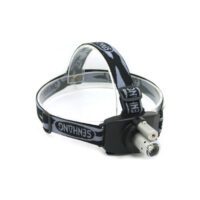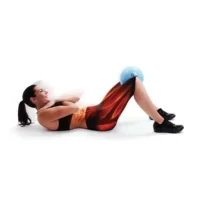Benign Paroxysmal Positional Vertigo (BPPV)
Article by J. Miller, S.Armfield
BPPV: Benign Paroxysmal Positional Vertigo
What is BPPV (Benign Paroxysmal Positional Vertigo)?
Benign Paroxysmal Positional Vertigo (BPPV) is a common inner ear disorder that causes sudden episodes of vertigo—an intense spinning sensation—when you move your head into specific positions. These episodes, though brief, can be highly disruptive to daily life, leading many to seek medical advice. The condition is colloquially known as “ear rocks” due to the involvement of tiny calcium carbonate crystals, scientifically referred to as otoconia.
Why Does BPPV Occur?
BPPV occurs when otoconia, which are normally found in the utricle—a sensory organ in the inner ear—become dislodged from their usual position and migrate into one of the semicircular canals of the inner ear. These microscopic crystals play a crucial role in our sense of balance and spatial orientation. However, when they enter the semicircular canals, they disrupt the normal fluid movement within these canals, leading to vertigo by sending incorrect signals to the brain about your body’s position and movement.
How is BPPV Triggered?
BPPV symptoms are typically triggered by specific changes in head position, such as looking up or down, rolling over in bed, or tilting your head. This disruption can cause a range of symptoms, including brief episodes of vertigo, dizziness, loss of balance, and nausea. These episodes, although short, can be quite distressing.

What are the Causes of BPPV?
The exact cause of otolith displacement isn’t always clear, but several factors can contribute to BPPV, including:
- Head injuries or trauma
- Ear surgery
- Age-related changes in the inner ear
- Prolonged immobility
- Inner ear infections or disorders
- Migraines
Medical Terminology: Understanding BPPV
While “ear rocks” is a commonly used term, medical professionals prefer more precise terminology. The condition where otoconia are floating freely in the semicircular canals is known as canalithiasis. In rarer cases, when the otoconia adhere to the cupula of a semicircular canal, the condition is referred to as cupulolithiasis. Understanding these terms can be helpful when discussing the condition with healthcare providers and exploring treatment options like the canalith repositioning procedure, commonly known as the Epley manoeuvre.
How is BPPV Diagnosed?
If you suspect BPPV, a vestibular-trained physiotherapist can confirm the diagnosis through a physical examination and specific head positioning tests. These tests help pinpoint the location of the dislodged otoliths and determine the appropriate treatment.
How Can BPPV Be Treated?
Vestibular physiotherapy plays a crucial role in treating BPPV. The most effective treatment involves repositioning maneuvers, such as the Epley or Semont (Liberatory) maneuvers, performed by a skilled physiotherapist. These techniques aim to move the dislodged otoliths back to their proper location, providing immediate relief from vertigo. Professional assessment is essential, as attempting these maneuvers without guidance could worsen the symptoms.
Why Seek Professional Treatment for BPPV?
While BPPV is treatable, it requires professional intervention to ensure effective management. Physiotherapists trained in vestibular disorders can provide accurate diagnosis and treatment, significantly reducing symptoms. With proper care, over 80% of patients experience immediate relief, and success rates can exceed 90% with repeated treatment.
New Research on BPPV
Recent studies have advanced our understanding of BPPV, particularly in the precision of diagnosis and treatment. Studies published in journals highlight the effectiveness the long-term outcomes of various canal repositioning manoeuvres (Palmeri et al, 2022 , Kim et al, 2021). These findings underscore the importance of professional treatment in achieving optimal recovery.
Seeking Professional Advice
If you experience symptoms of BPPV, such as dizziness or balance issues, it’s important to consult a vestibular-trained physiotherapist. Professional assessment and treatment can help you manage and overcome these symptoms, allowing you to regain your balance and enjoy daily activities without discomfort.
What to Do?
Suspect BPPV? Consult a physiotherapist for accurate diagnosis and effective treatment. With the right care, you can manage and overcome BPPV, restoring your balance and quality of life.
Rochedale - Call 38410277
Book Online: Rochedale Salisbury - Call 32751044
Book Online: Salisbury Sandgate - Call 32691122
Book Online: Sandgate
FAQs on BPPV
- What triggers BPPV?
- BPPV is typically triggered by certain head movements, such as looking up, lying down, or turning over in bed. These movements cause the dislodged otoliths to move, leading to vertigo.
- Can BPPV go away on its own?
- Yes, BPPV can sometimes resolve without treatment, but professional intervention usually provides quicker and more reliable relief.
- Is BPPV a permanent condition?
- BPPV is not usually permanent, but symptoms can recur. Proper treatment can reduce the frequency and severity of episodes.
- How long does BPPV last?
- Each episode of BPPV typically lasts less than a minute, but the condition can persist for weeks to months if untreated.
- What is the best treatment for BPPV?
- Repositioning manoeuvres like the Epley or Semont manoeuvres are the most effective treatments for BPPV.
- Can BPPV cause hearing loss?
- BPPV does not cause hearing loss. It primarily affects balance and spatial orientation.
- What should I avoid if I have BPPV?
- Avoid sudden head movements and activities that trigger vertigo. Consult with a physiotherapist for specific advice.
- Can stress cause BPPV?
- While stress does not directly cause BPPV, it can exacerbate symptoms or make them feel more intense.
- How is BPPV diagnosed?
- BPPV is diagnosed through physical examination and specific head positioning tests conducted by a trained healthcare provider.
- Is BPPV related to other health conditions?
- BPPV can be associated with other inner ear disorders, head trauma, or prolonged immobility.




















